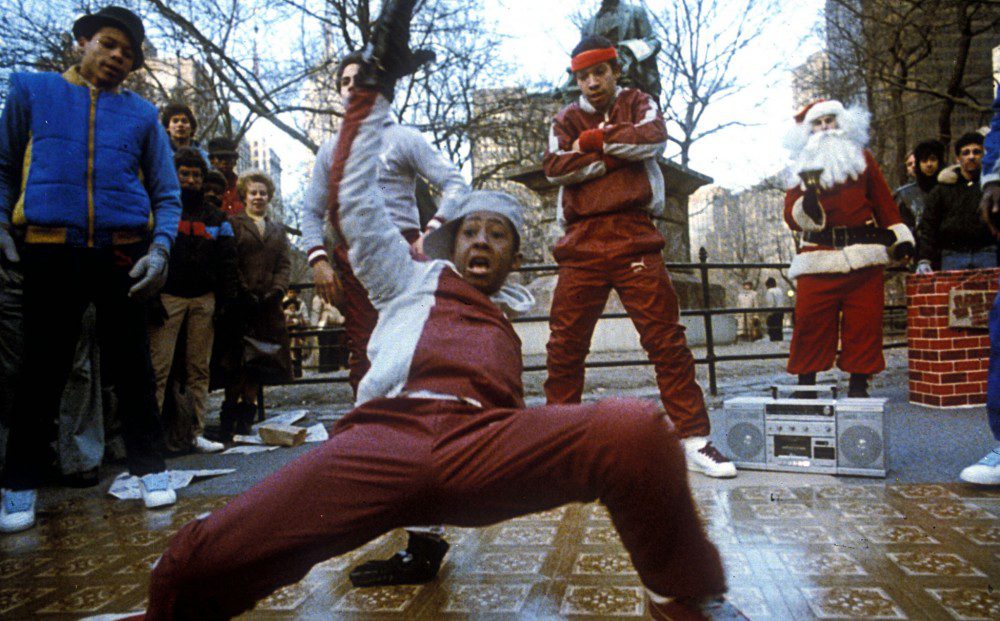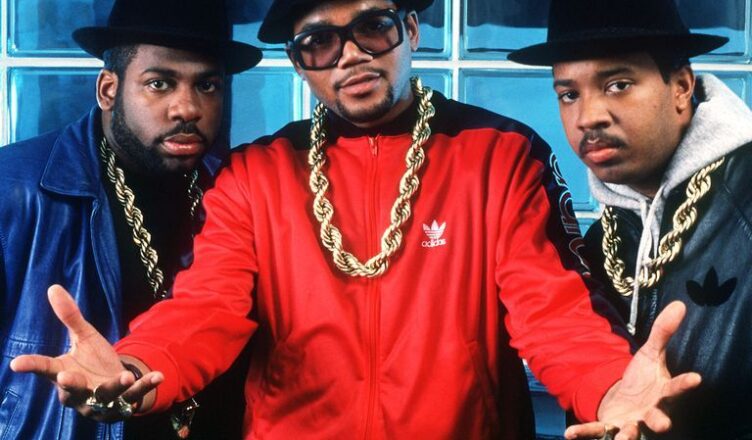As we come upon the end of the year and amidst all the Hip Hop 50 hoopla, it’s a good time to reflect on what made us love this culture in the first place. Late Gen Xrs, Millennials, and beyond don’t know a life without Hip Hop. Among those generations are those who either practiced or perfected an element of the culture (rapping, deejaying, breaking, and graffiti are considered the foundational elements. Others have been proposed with varying degrees of acceptance over the years: knowledge, fashion, language, Afrocentricity, ignorance…the list goes on). But all heads can pinpoint a specific experience, an epiphany, a lightning in a bottle moment that made them lifetime lovers of the culture.
Yes, it’s ok to love Hip Hop. I do. To quote the excellent title of DJ Semtex’s book, Hip Hop Raised Me. An unknown percentage of male Hip Hop heads grew up fatherless (such as myself), and Hip Hop filled that void for better or for worse. Yes, the highly misogynistic content of stalwarts such as Too $hort and Snoop (that’s “beloved by suburban America as Martha Stewart’s BFF” Snoop, not the “bitches ain’t shit but hoes and tricks” early 90’s version) is still being worked out among us 30 + years later. It won’t surprise you to learn that characters such as Little Marco Rubio and Paul Ryan are declared Hip Hop fans. But are they of the culture? I have a hard time imagining Lil Marco blasting “Straight Outta Compton” in his Senate office, oblivious to the irony. But what do I know? Stranger things have happened.
Rubio did grow up in Miami, a party and music obsessed city. To have grown up in South Florida is to be intimately familiar with Bass, Reggae, Freestyle, R&B, Funk, and depending on your nation of origin (we’re all immigrants here) Salsa, Merengue, Bachata, Kompas, Soca, Vallenato, Cumbia…get the point? Into that mix came Hip Hop, thanks to the endless waves of New Yorkers who have been relocating to the tropics since the first rat was spotted on the subway tracks.
Miami is also trendy, albeit before Al Gore invented the Internet, we were one step behind. Tapes circulated in the analog world from Flea Market USA and your cool cousin from up north who came down to visit with the latest mixtape. Like the rest of the world, Miami embraced graffiti and breaking during the magical crossover days of the early 80s, a time when Michael Jackson moonwalked into global superstardom and breakers were regulars on SNL and at The White House. That’s when I fell in love with it.
My epiphany and earliest Hip Hop related memory
is going with my older cousin to see Beat Street at the movie theater in 1983. Today derided as the weaker commercialized version of Wild Style (the first and better Hip Hop movie), it managed to reach audiences the indie art house distributed Wild Style couldn’t. That’s where I come in, because Beat Street was released by Universal-affiliated Orion Studios, meaning my teenage cousin and my 6-year-old self could see it in Venezuela, where I was born. To say I was blown away is an understatement. When Ramo flexed a subway graffiti piece or DJ Double K dropped a funky beat at an illegal Hip Hop jam with pirated electricity, they became superheroes on par with Spiderman and Batman to me.
I was blessed to travel to the States during this era thanks to my mother’s active-duty status in the Venezuelan Air Force, which in the BC (Before Chavez) years meant regular training deployments to various US Air Force bases. I distinctly remember McDill Air Force Base in Tampa and Lowry AFB in Denver as places I touched down and lived in for a few months. In fact, my 2nd, 5th, and 6th grade elementary school years were spent in Aurora, the Denver suburb where Lowry was located. It was there that my mom bought me my first bootleg tapes at a flea market: Run-DMC’s “Raising Hell” and LL Cool J’s “Bigger and Deffer.” After being blown away upon my first listen, I quickly put their posters up on my bedroom wall next to the Motley Crue and Metallica magazine page rip outs.
Hip Hop and Heavy Metal co-existed peacefully in my childhood imagination, because they both represented youthful rebellion and masculine confidence. Even the glammed-up rockers in full makeup got girls, to say nothing of the brand name track suits and dookie rope gold chains sported by fly MCs and their crews. Friday nights were my favorite, because I was allowed to stay up late watching Yo! MTV Raps, Arsenio Hall, and Headbanger’s Ball. Fab 5 Freddy and Rikki Rachtman raised an entire generation across America, and at least for myself personally, gave me a color-blind outlook. Black, White, Beats, Guitars…dopeness is what counted then and still does.
However, during the elementary school years I spent in Venezuela, Hip Hop was severely lacking. Only the truly wealthy had access to MTV via expensive satellite dishes, so the culture was not broadcast like in the States. The language barrier and everyday Latino classism and racism (“eso es musica de negros niches”) were also roadblocks to Hip Hop culture expanding in Latin America. All of that came tumbling down once again thanks to the Internet and migration, and of course the enormous contribution made by the widely acknowledged first skilled MC to rhyme and record Hip Hop albums entirely in Spanish: Puerto Rico’s Vico C with his production partner DJ Negro, a founding figure in Reggaeton as well.
So, while my cousins and friends in Venezuela asked, “who’s that?” when they saw my Run-DMC poster, I had memorized both albums and fiended for anything even remotely Hip Hop related. A months-old Rolling Stone magazine with a Beastie Boys interview was gold, a dub of “Licensed to Ill” provided by a cousin who had gone to the States priceless. When my mom married an American she met on a job after leaving the Air Force, we came to the US for good. It was 1989, and I’ll never forget witnessing the Berlin Wall falling just a few days after we arrived in a Kansas City suburb. I was 12 years old and transferring into 8th grade. I attended a different school, sometimes 2 in the same year, of every grade from 1-12. Hip Hop was my constant companion, helping me make friends over and over.

Unlike now, not everyone was into Hip Hop.
There was a code we abided by, and it helped me connect with other Hip Hop heads in every new school. The code was established by how you carried yourself, what you wore, and how you spoke. In my 8th grade class, surrounded by White kids, I was one of two Hispanics in the entire school. But I was into Guns ‘N Roses and Slayer just like they were and spoke perfect English, so I was spared the foreign exchange student treatment. Even with that, I stood apart with my Air Jordans and Benetton jeans. Adhering to the Hip Hop fashion code of the time enabled me to make friends with the other heads: a few Black kids and one White boy who was down.
I was introduced to Miami Bass by one of the Black kids, who came into biology class one day with his Walkman and a tape whose cover featured giant bass woofers stomping fools out like Godzilla: “The Bass That Ate Miami.” I was not to arrive in the 305 until some years later, but that tape planted the seed of my undying love for the crib. I immediately asked him if I could hold it and to my eternal gratitude he said yes. Never mind that I couldn’t properly appreciate the tape because of being a jit with no boomin system, the notes that emanated through the Walkman headphones let me know there were other Hip Hop flavors being developed nationwide. When The 2 Live Crew became the biggest crossover act since Run-DMC and Aerosmith, even the White boys couldn’t front. Miami had made its name in Hip Hop, and there was more to come.
Entering high school, which are the years where we get into the music that will accompany us the rest of our lives, I was exposed to the intricate wordplay of Brand Nubian, the rising consciousness of Ice Cube, and the musical mastery of A Tribe Called Quest. When Lord Jamar rapped:
“You got to know the ledge to wise the dumb
And understand your culture of freedom
Power equally with the Gods
So you can build and born your cipher
All your life you must teach truth
Of the true and living God, not a mystery spook
And when you do that, pursue that goal
Which made the student enroll and only then you’ll prosper”
The 5 % terminology and beliefs combined over the classic James Brown “Funky President” break loop blew my 13-year-old mind away. What the hell is he talking about? Those bars sounded like a riddle, a puzzle that I had to solve. Keep in mind I was in Denver at the time, where the only 5 % talk was that figure being referenced as the Broncos’ chances of winning the Super Bowl. It wouldn’t be until my first college semester that I managed to obtain the Supreme Alphabet and Mathematics by typing “5 % Nation” into a computer connected to the “internet,” an obscure academic search tool hidden in the library.
That’s my foundation, the late 80s-early 90s golden age.
I fell in love with Hip Hop back then and when it was my turn to bring tapes to my cousins during my teenage summer vacation visits to my South American homeland, it was “Boyz N The Hood,” “Magic Mike Drops the Bass,” and “How I Could Just Kill a Man” that I blasted in an uncle’s truck for them. One of those cousins is now in Brooklyn, familiarizing himself with the vast Nas and Wu-Tang catalog thanks to yours truly. They’re helping him learn English just like LL and Rakim helped me. It’s also a window into America, because what Wu talked about in “C.R.E.A.M” and Nas in “I Can” is not exported abroad. According to American pop culture overseas, we all live like The Fresh Prince of Bel Air, ignoring the fact that sometimes we are treated like Jazzy Jeff, thrown out of society, and having to make our presence known.
Hip Hop can be positive, negative, inspiring, crass, dope, and wack. It’s all those things because we human beings are all those attributes at one point or another. Some claim to not recognize what mainstream Hip Hop has become, but that’s the older generation exercising their eternal right to criticize the youth. Our parents did it to us when we were wearing XXL shirts and jeans blasting “fuck bitches, get money” “throw ya gunz in the air” and other uplifting positive anthems. The question I have is what’s the difference between “Pop That Pussy” and “WAP”? Believe it or not, the culture is alive and well underneath the mainstream depraved bullshit. Dig in those digital crates on Spotify and SoundCloud, you might find a new artist or crew that meets your standards (the algorithm and word of mouth has introduced me to Coast Contra, Roddy Ricch, Isaiah Rashad, and Navy Blue). Then raise your glass or spark an L to another 50 years of Hip Hop and beyond, because like the Teacha reminded us: “Back in the day I knew rap would never die.”
Word up!


